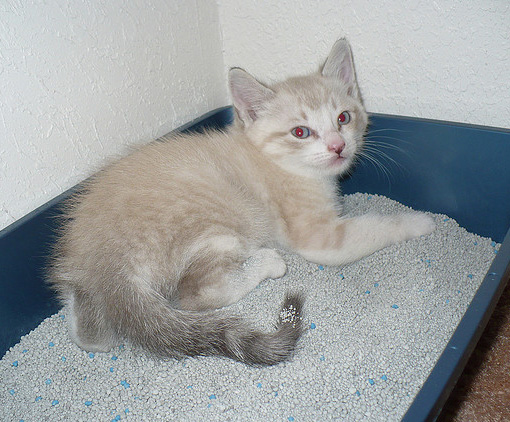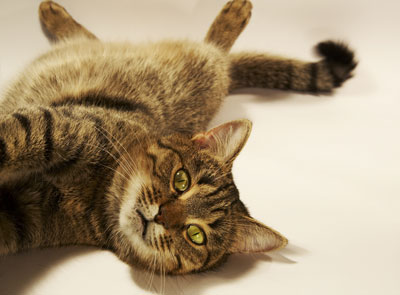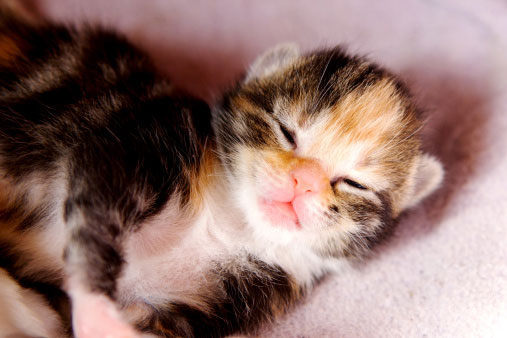Feline leukemia symptoms (FeLV) result from a disease that affects as many as 10% of all at-risk cats (the elderly, the very young, and outdoor un-neutered males.)
Overall, 2%-3% of all cats are carriers of this incurable illness.
In fact, feline leukemia is the #2 cat killer after being hit by cars.
Although not a hardy virus, as it relies on a carrier, feline leukemia is nonetheless fatal if contracted.
When it is passed from the the carrier, it attacks the immune system, causing a cancer of the white blood cells.
This makes your feline vulnerable to a host of other illnesses that his body cannot fend off.
If you have an indoor-only kitten, her risk of contracting feline leukemia is very low as long as she doesn’t have contact with infected cats.
You cannot carry it in on your shoes and it is not airborne.
How is FeLV Transmitted?
FeLV can be transmitted through the saliva, nasal secretions, tears, urine, and feces of an affected animal.
It can even be transmitted from mother to offspring through the placenta or milk.
Much of the time, feline leukemia is transmitted from one un-neutered male cat to another from bites that result from a fight.
Feline Leukemia Symptoms
Since it attacks the immune system, feline leukemia symptoms can present themselves in many ways:
- fever
- vomiting
- diarrhea
- anemia
- breathing problems
- loss of appetite
- progressive weight loss
- poor coat
- pale gums
- mouth and gum inflammation
- skin, bladder, or upper respiratory tract infections
- siezures or behavioral changes
- eye conditions
- reproductive problems (ie, abortion of kittens in affected females)
I f your cat exhibits any of these feline leukemia symptoms, the only way to confirm the diagnosis is with a blood test at the veterinarian’s office.
f your cat exhibits any of these feline leukemia symptoms, the only way to confirm the diagnosis is with a blood test at the veterinarian’s office.
Generally, any time a health condition becomes chronic, a cat is tested for feline leukemia.
Once contracted, feline leukemia symptoms will have one of three outcomes:
1) Her immunity will kill off the virus completely
2) It will lie latent (inactive) in her bone marrow or lymphoids for months or years until triggered, or
3) The virus will rapidly replicate causing swift illness and death of the kitten
Prevention of Feline Leukemia
It is very important to keep your new kitten and resident cats safe from killers like feline leukemia.
Always follow the vaccination schedule for your kitten. It is simple to do and very important to prevent not just FeLV, but feline distemper, AIDS, and upper respiratory infections.
Any new kitten must be tested for FeLV before bringing her in contact with other pets, even if she doesn’t show any Feline Leukemia symptoms.
Getting her vaccinated is not enough; if she is already infected, the vaccine will not cure it and she can still pass it on to your other household cats.
The same goes for protecting her: If your resident cats are exposed to risky conditions, such as being allowed outdoors, you must get them tested to make sure they cannot make your new kitten sick.
If Feline Leukemia Symptoms Lead to a Positive Diagnosis
Since there is no cure for feline leukemia, some difficult decisions may have to be made.
If you have other cats, all must be tested to see if they have been infected as well.
Any cat that has tested positive for feline leukemia must be separated from healthy cats.
Given ideal conditions, your cat can survive for anywhere from a few months to several years before any feline leukemia symptoms present themselves.
By providing a healthy diet and veterinary wellness-visits, you can provide a comfortable life for your pet and help to keep her free from the worst symptoms until she succumbs to her illness.







